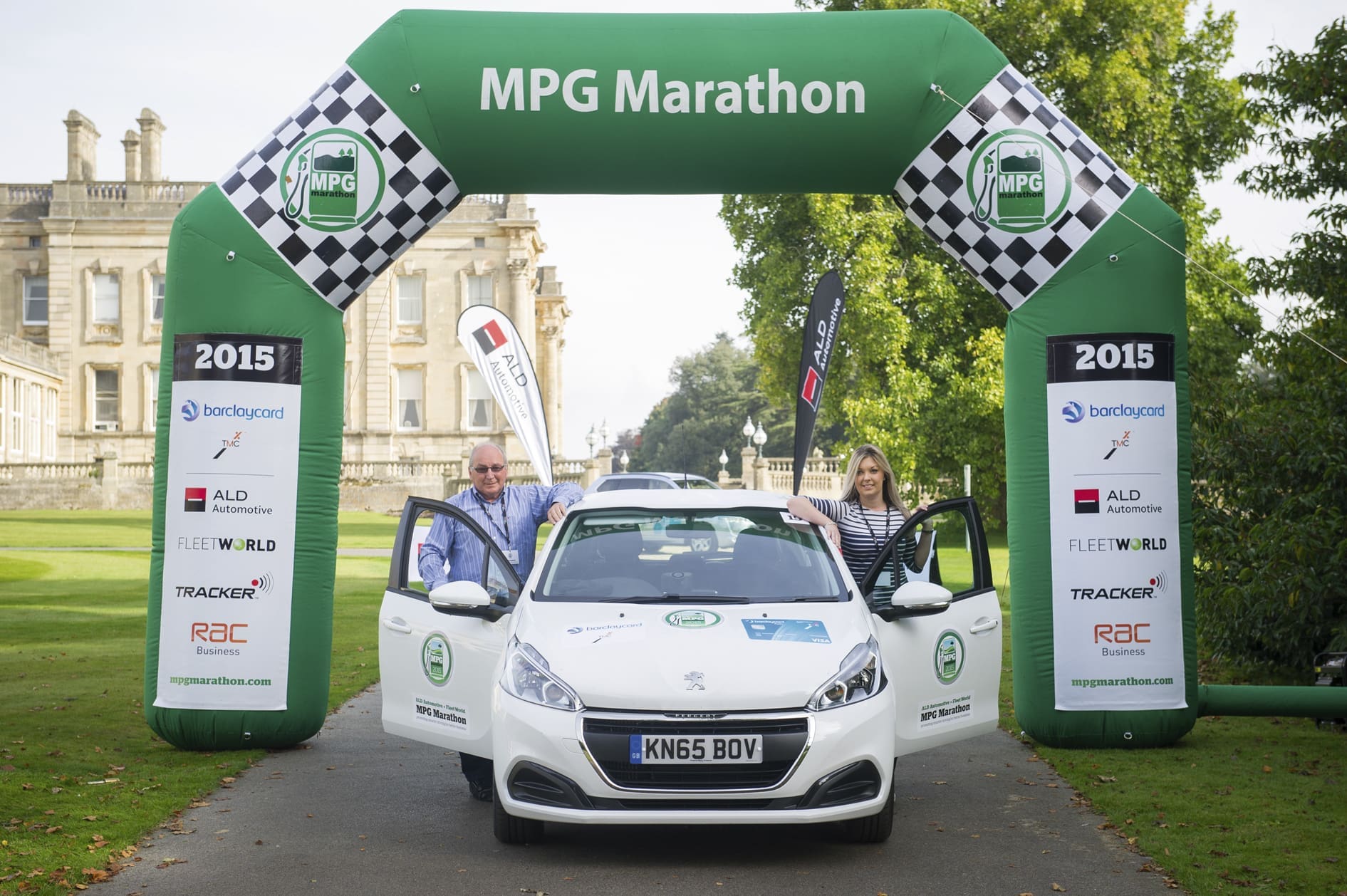

Unreachable fuel economy figures have been hitting the headlines recently, but a group of dedicated hypermilers met up last month to prove that it can be done in the annual MPG Marathon. John Kendall reports.
What’s the point of trying to improve on a car’s official EU combined fuel consumption figure, when we know that the laboratory conditions used to produce those figures are so different from the way most people drive their cars? Well to paraphrase the climber George Mallory, because you can.
And that is what participants in the annual MPG Marathon set out to do. There are basically two ways of winning – by making the greatest percentage improvement over the official EU combined fuel consumption figure, or by returning the best outright fuel consumption. While a number of petrol cars have recorded the best percentage improvement, to date, and the Marathon has been staged every year for the past 15 years, only a diesel car has ever returned the best overall mpg.
The event has classes for diesel, petrol, electric and hybrid models, according to their CO2 emissions. Light commercial vehicles also have a class to themselves and all categories attracted entries this year. Every vehicles is tracked using Tracker equipment to check speeds and timings.
The Route
Day one
Section one: Heythrop Park to Audleys Wood Hotel, Basingstoke via YHA Streatley-on-Thames
Section two: Audleys Wood Hotel to Beechfield House, Beanacre, near Chippenham
Section three: Beechfield House to Heythrop Park
Day two
Section one: Heythrop Park to Tortworth Court, Gloucestershire
Section two: Tortworth Court to Esseborne Manor, Hurstbourne Tarrant, via Pewsey police station
Section three: Essebourne Manor to BP Cannon Pool, Witney
Section four: BP Cannon Pool to Heythrop Park
Just like the last two years of the event, there was no set route for participants to follow this time. The event was based at the Heythrop Park Resort, near Enstone in Oxfordshire, with three sections to cover on day one, and four on day two. All participants had to do was reach the destination on each of the sections, with a waypoint included in two sections over both days, then maintain a set average speed. This was generally 30mph, but tight timing on day two meant that an average of 34mph was needed to cover one of the sections. Fuel consumption penalties apply to those who do not make the average speed.
We drove a Citroën C4 Cactus Feel BlueHDi 100 this year, with regular co-driver Paul Nieuwenhuis. Our C4 Cactus was not fitted with satellite navigation, and we relied on a portable system with traffic alerts, and conventional maps to find our way. Other entrants included a Peugeot 208 Active BlueHDi 75, another C4 Cactus powered by a three-cylinder petrol engine, a Jaguar XE with 161bhp Ingenium diesel unit, two Mazda2 1.5 diesels, a Ford Mondeo hybrid, Audi TT 2.0 TDI ultra, a Honda Civic 1.6 i-DTEC, no less than five BMW 320d EfficientDynamics saloons – two manual and three automatic – a Caterham Seven 160 and a 1995 Ford Mondeo 1.8i LX entered for comparison purposes with the latest Mondeo hybrid. Among the participants, there were no less than eleven previous winners, so there was a strong competitive element.
Although the weather was dry with light winds, ideal conditions for the Marathon, there were a number of hilly sections to keep us alert. Day one was the easier of the two and by the end of it, our trip computer was registering an average of around 108mpg, giving us cause for optimism with an official combined figure of 83.1mpg. Day two proved far tougher, with more hills, plus the added complication of a higher average speed on the second section. At the end of the second day, we were still reading around 107mpg, so although we were confident that we had done fairly well, we knew that others were very close. We’ve been here before, too, but had never broken through the magical 100mpg barrier. To later find out that we had beaten it, was in many ways a better prize than coming third in the best percentage improvement.
This year, former racing driver Mick Linford won for the fourth time with 104.5mpg in the Peugeot 208, his first time through the 100mpg barrier. We were beaten into third place by Diesel Car founding editor John Kerswill, who recorded 103.42mpg in a Mazda2 to our 103.28mpg in our Citroën C4 Cactus. Damn and blast. We will be back…
John Kendall
| Car | Total fuel used | Total distance covered | EU Combined Economy | MPG Achieved | % improvement |
| Peugeot 208 BlueHDi 75 | 3.69 gallons | 385.25 miles | 80.70mpg | 104.50mpg | 29.49% |
| Mazda2 1.5 Diesel | 3.87 gallons | 400.16 miles | 83.10mpg | 103.42mpg | 24.45% |
| CitroÎn C4 Cactus BlueHDi 100 | 3.79 gallons | 391.46 miles | 83.10mpg | 103.28mpg | 24.29% |
| Car | Total fuel used | Total distance covered | EU Combined Economy | MPG Achieved | % improvement |
| Honda CR-V 1.6 i-DTEC | 4.52 gallons | 380.87 miles | 64.20mpg | 84.34mpg | 31.37% |
| Peugeot 208 BlueHDi 75 | 3.69 gallons | 385.25 miles | 80.70mpg | 104.50mpg | 29.49% |
| CitroÎn C4 Cactus BlueHDi 100 | 3.87 gallons | 400.16 miles | 83.10mpg | 103.42mpg | 24.45% |
© Motorworld Media 2023
Registered Office: 4 Capricorn Centre, Cranes Farm Road, Basildon, Essex. SS14 3JJ
Company Number: 8818356
Website designed by Steve Dawson